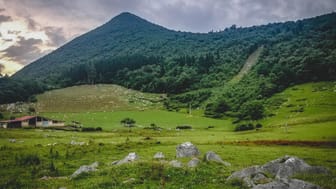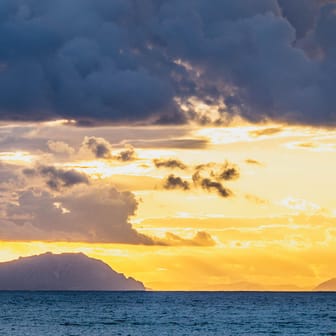Travel 2017
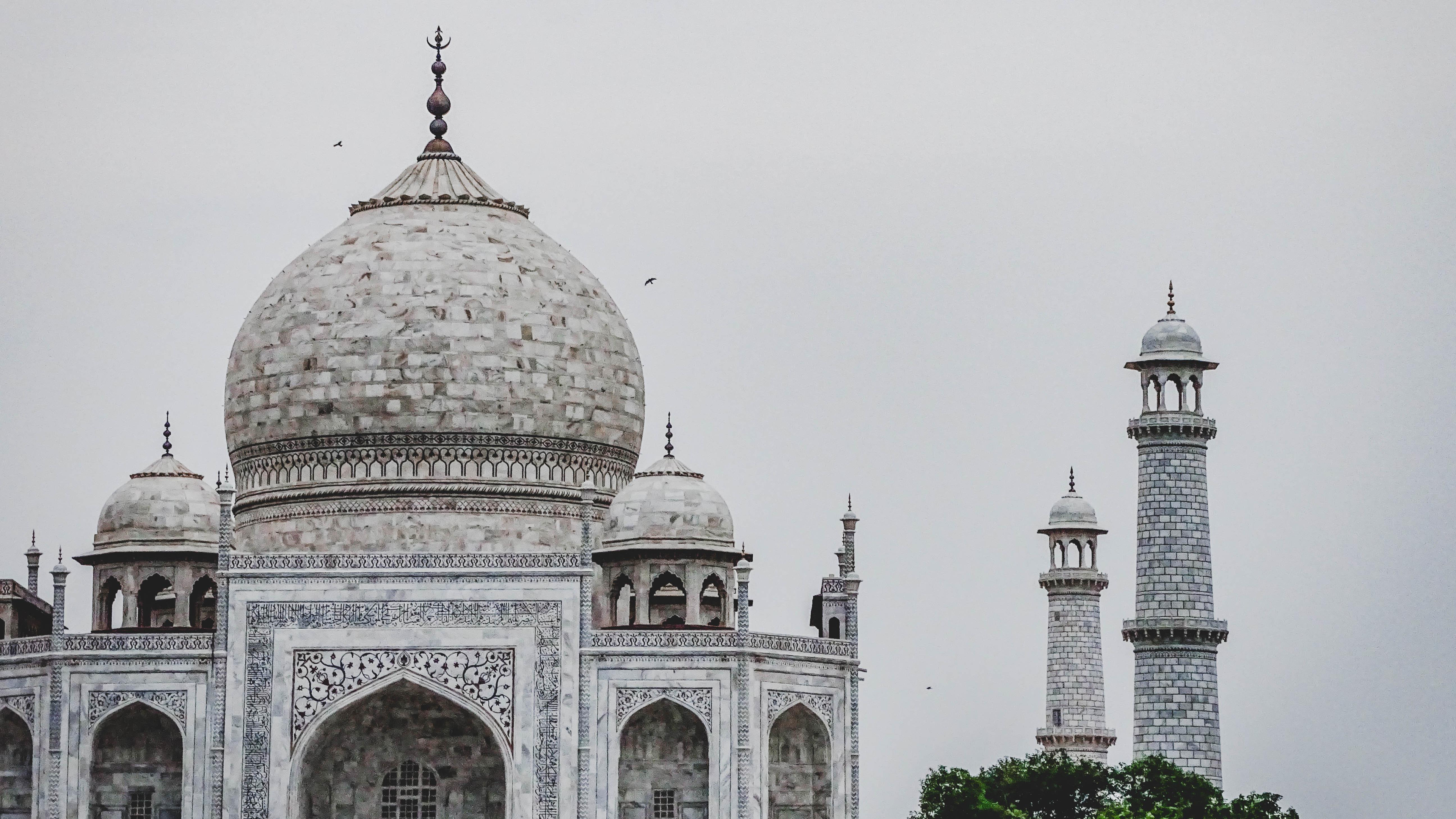
Basque Country
I basically grew up in the Basque Country of Northern Spain. Depending on how you define "growing up", but ultimately, some of the best years of my life were spent there and it really has a strong hold on me and has influenced so much of how I view the world.
My family stopped living there in 2000, but I went back twice in 2001 for a few days and for a few hours in 2008, and it wasn't until 2016 when I was able to go back for a longer period of time again. Despite the fact that most people would have expected too many changes and that it wouldn't feel like "home" anymore, it was the complete opposite.
It helps that my best friend still lives there with her family, so now just about every time I go (with one notable exception) I stay with her. In July 2017 she got married, and I spent a week with her in the Basque Country for the Spanish/Basque wedding with her family.
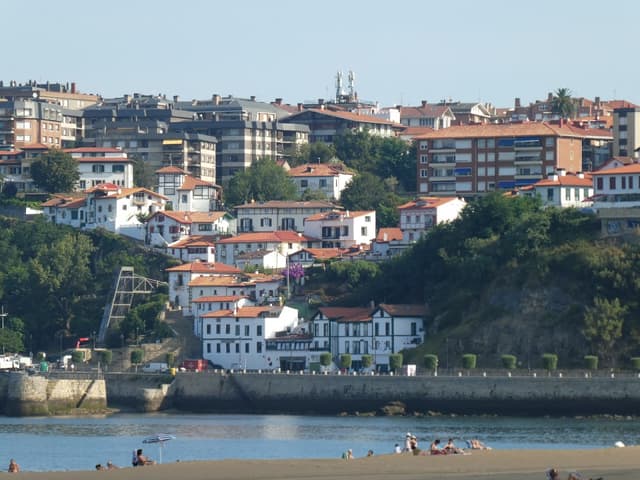
Getxo, pronounced "GEH-cho", is a municipality consisting of a few different towns all sharing one government about 15 km outside of Bilbao. This is the area I spend most of my time in and it's where I grew up. My family lived just outside the district of Romo which is where I went to school, and my best friend's family has lived in the district of Algorta all her life.
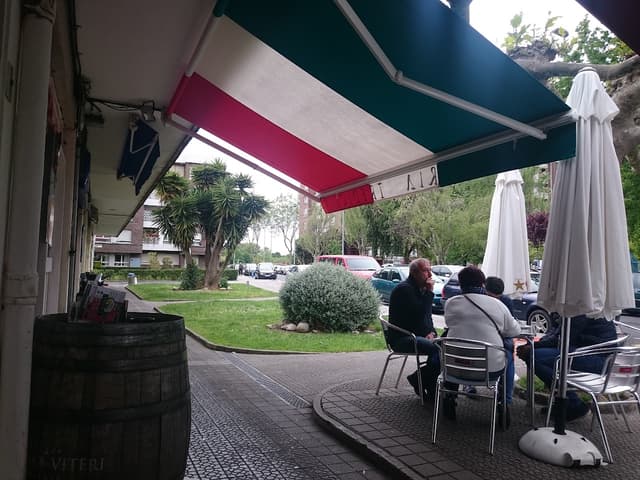
This is a tiny little pizzeria in the neighborhood where my best friend and her parents live. It's a local icon, and they've expanded over the years, and the offerings are pretty standard, though they also get a little funky and fun with some of their toppings to remind everyone that you're still in the Basque Country (seafood pizza anyone?)
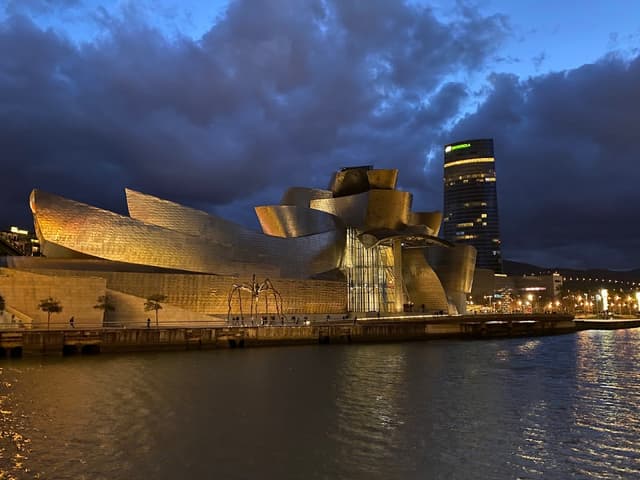
The day before the wedding, while my best friend got some wedding photos done elsewhere, I headed into downtown Bilbao to go to the Guggenheim. This is the most expensive museum in the area and rarely offers discounts, which is why I hardly ever go in, but a friend of hers wanted to go, and I decided to join. I go to Bilbao often enough at this point that I only go in if there's an interesting temporary exhibit at this point, but if it's going to be your only trip to Bilbao, it's definitely worth a visit just for the novelty!

This small but very local restaurant is perfect for small or large gatherings and basically does Basque pub food: roasted peppers, all kinds of meat, and beers and wine. I don't think they sell sangria though...
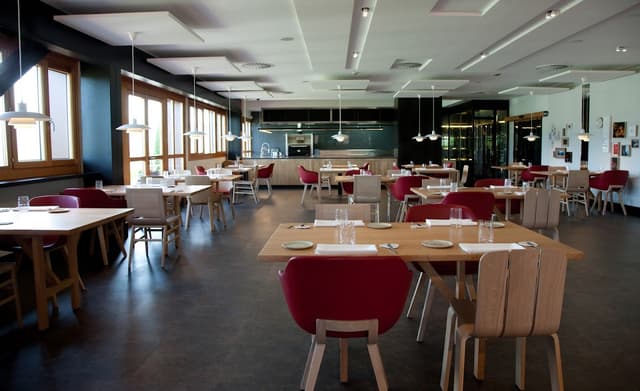
Most people who are familiar with the world's best restaurants list are probably familiar with Azurmendi, the restaurant run by Eneko Atxa. He also operates a banquet hall and events venue with catering service for weddings, with the same quality you might expect of a 3-Michelin-star restaurant. The wedding itself was in the vineyard operated by the restaurant where the grapes are used to make txakoli, a young Basque white wine that's slightly dry and slightly sparkling, After the ceremony we moved to the event space for the seven-course meal and the dancing and festivities afterwards.
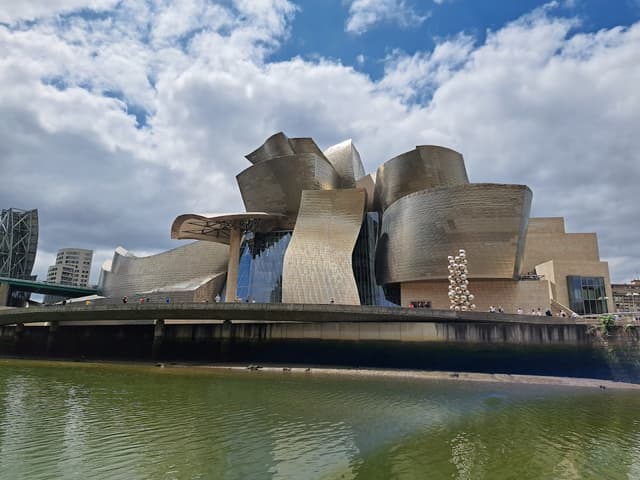
If you're looking for a great way to spend a few hours and get to know the Bilbao metro area, Bilboats is a great option! Since my best friend's husband had a lot of family members come in from outside of Spain at the wedding, they thought it would be a great idea to do the boat tours. It starts right on the river near the Zubizuri and goes all the way out to the harbor in Getxo and back into Bilbao. You can get this guided in multiple languages if you'd like!

One of the most iconic restaurants in Bilbao is the Café Iruña, located right across from the Palacio de Justicia. It was built in the 1890s and reflects the popular Art Deco style of the time, which in Spain was infused with a Mudéjar style most commonly associated with Andalusia. After the boat tour we stopped here to grab some food and sit for a bit.
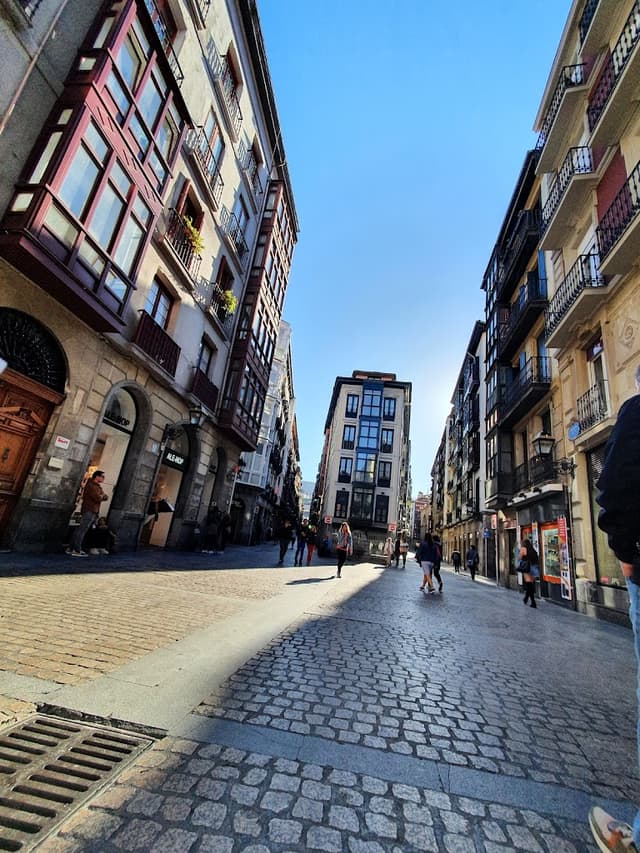
After some pintxos and wine, all who were left were my best friend and her husband, her parents and in-laws, and myself, so we wandered around the Casco Viejo of Bilbao, the oldest part of the city, for a bit and I chatted with his in-laws for a bit in English as they came from India and it was their first time in the Basque Country.
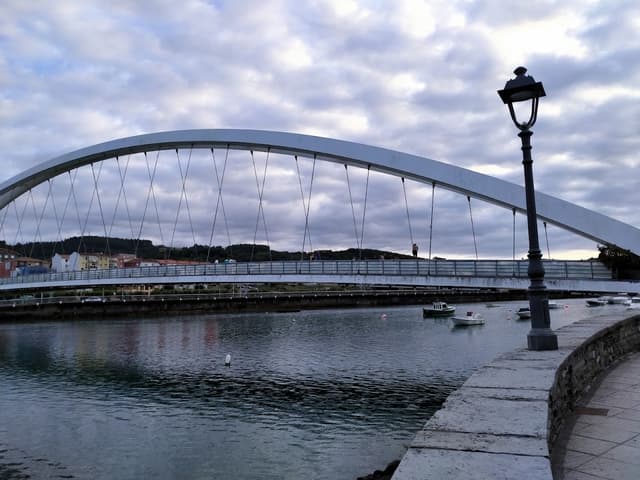
We then took the in-laws and some other aunts and cousins to the port town of Plentzia and the beaches of Plentzia and Gorliz via Metro. If you're staying in Bilbao, you can usually get on the Metro that goes straight to Plentzia and walk from there, as the metro stop is right before the bridge leading into town and takes you on a walkway that covers the extent of Plentzia and neighboring town of Gorliz.
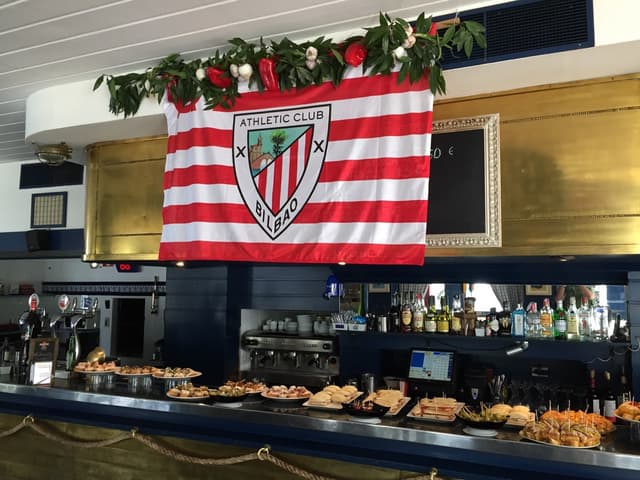
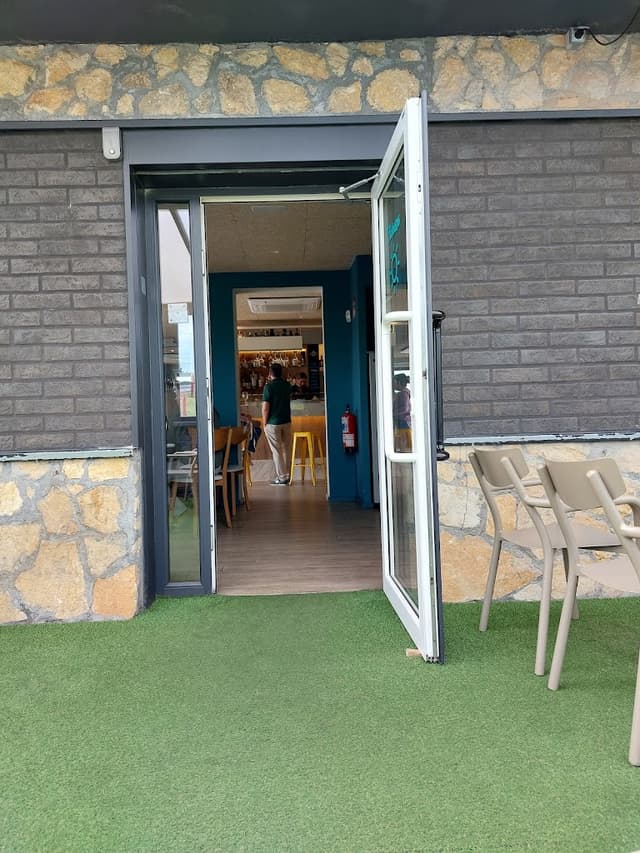
I grew up spending a lot of time in this area, very much off the beaten path even though just a few kilometers away, on the other side of the mountain, is the Bilbao airport. But you can't see it from here and instead, it just looks like a quaint mountain village in the middle of nowhere. Head a few kilometers down to Akarlanda Parkea and enjoy the nature around you!
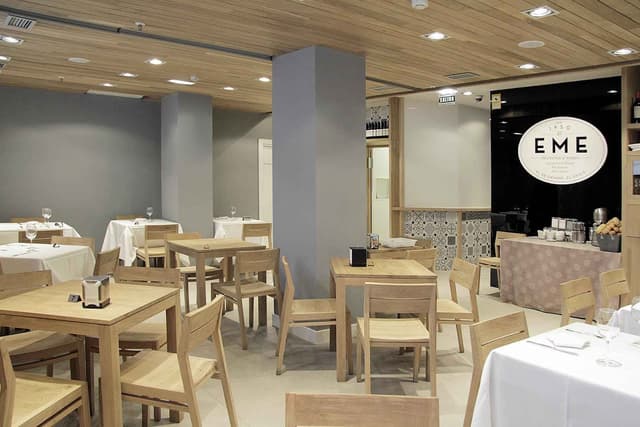
One of the worst-kept local secrets in Bilbao is El Eme, a sandwich shop known for its sandwiches called "triángulos". It's a simple name for a simple sandwich: a house-made mayo sauce with ham. No one asks what´s in it because no one cares. It's absolutely delicious and I love it. I don't even usually like mayo but whatever this sauce actually is, it's finger-licking good. You're truly a local once you've tried one.
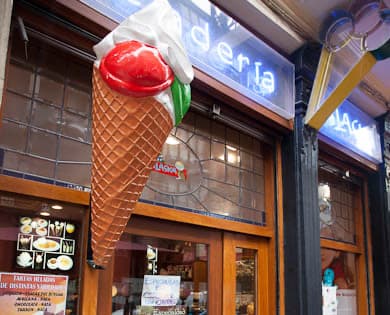
"Izozki-denda" simply means "ice cream shop" in Basque, and that's what you're getting here. My best friend and I spent the morning in Bilbao and after our sandwiches at El Eme, we stopped at this local favorite ice cream shop.
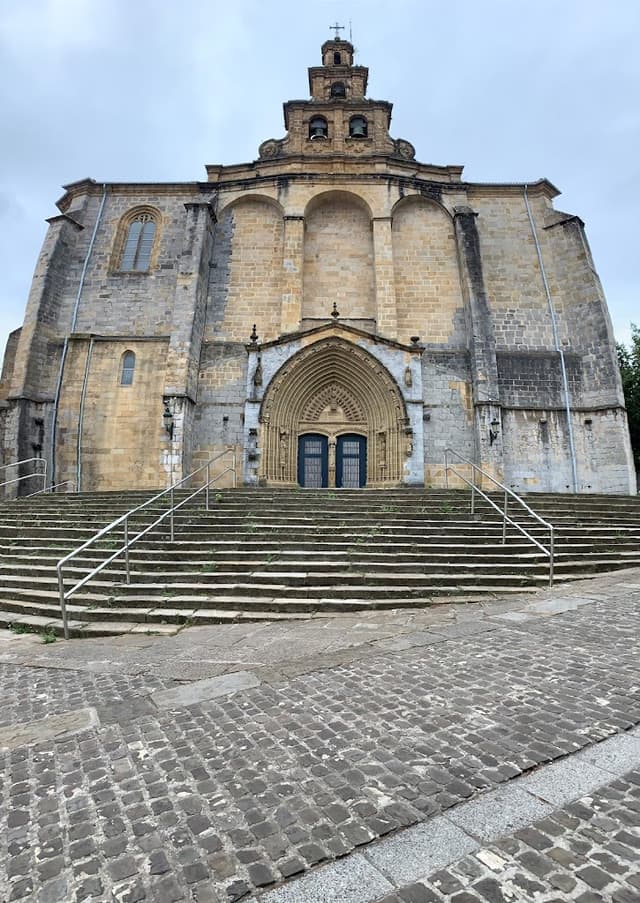

In the afternoon, we headed to the historical capital of Biscay province of Gernika-Lumo to introduce the in-laws to Basque history. This is where the representatives of the different municipalities would get together in the Middle Ages under the oak tree and decide on laws governing the region. It was also where the king of Castille would go to swear fealty to these representatives, known as "fueros", and ensure that the rights they had separate from those of the rest of the kingdom were protected under the laws of the kingdom. The King of Spain no longer is expected to swear this oath, but the hall is still in use by the Biscay government, though only in an official capacity when a new Lehendakari, or President of the Basque Government is elected.
The original building was destroyed during the 1937 bombings memorialized by Picasso's painting "Guernica", but it has since been rebuilt using the original plans, and the trunk of the oak tree that stood, and survived, during the bombings is in a small gazebo just outside the space.
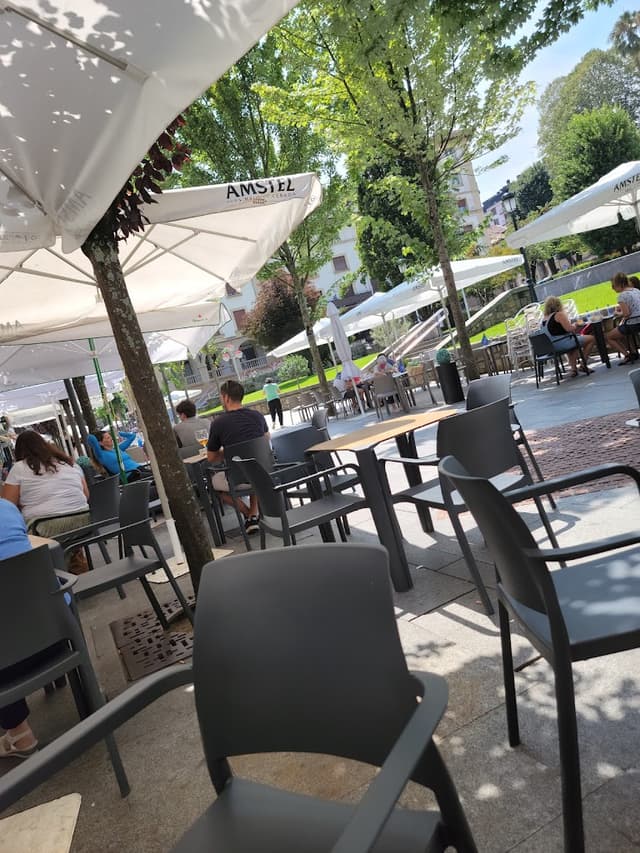
This is a great place to grab a bite to eat of some classic inland pintxos. As Gernika is further inland but located in a protected biosphere, the food options are mostly geared towards meat and not seafood, but given the proximity to the estuary nearby, you'll find some seafood options as well if you'd like.
India
My best friend married an Indian man, so one wedding was held in the Basque Country, where she grew up and where most of her family is located, and in Pune, India, where his family is from. Three weeks after leaving Bilbao, I was on a flight to Mumbai via Doha to participate in Part Two of her wedding celebrations. It was my first time in India, and I'd be there for two weeks traveling around. During the height of the rainy season of course, but that didn't stop us from having an incredible experience.

Pune
Pune is about a 5-hour drive from Mumbai, so a driver was hired to take me and a few others who arrived around the same time to take us up through the mountains of Maharashtra to what's known as the capital of education in India. Many universities, especially those which specialize in engineering, are based here.
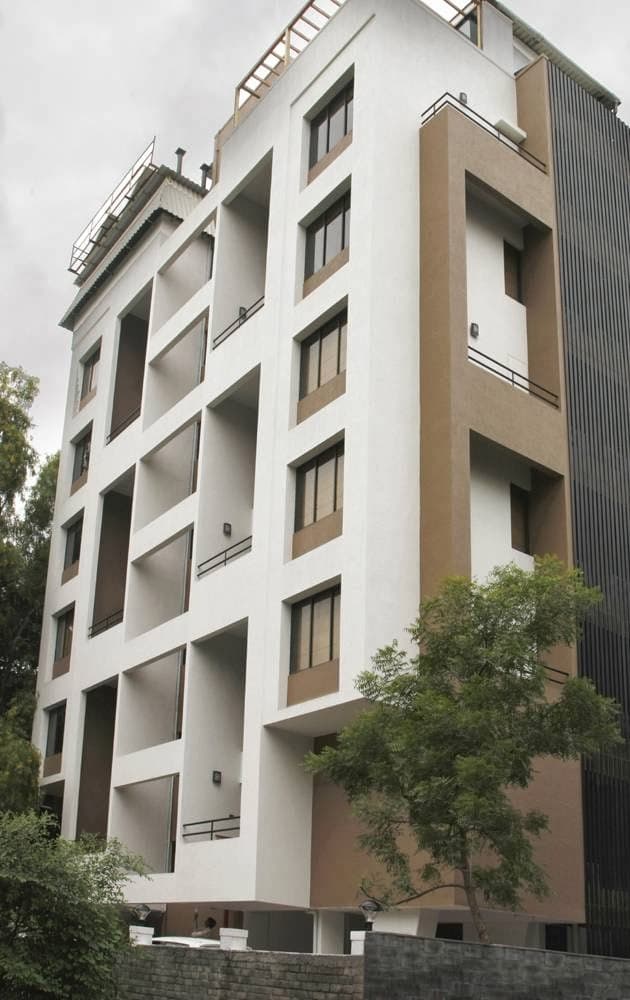
My flight arrived in Mumbai around 2 in the morning, and it wasn't until 6 am that I arrived in the place where I'd be spending the next few days until after the wedding. This hotel is located in a quiet neighborhood outside the more congested areas of the city. It's easily communicable by taxi and tuk-tuk/rickshaw if you're brave and have a local ordering one for you so you don't get ripped off (which I was more than lucky enough to have). The suites are modern and clean and have modern amenities with balconies.

The main shopping district in Pune is where we did our shopping for our wedding garments. The women in the group picked up our sarees in a few different shops, including one where you're treated to skilled craftsmen making the saris on looms. The men picked their wedding outfits elsewhere.
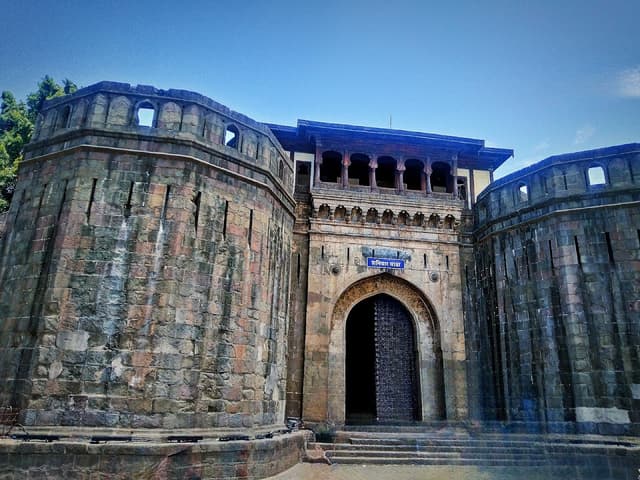
This fortress is emblematic of Pune and the state of Maharashtra, and it's where we started a walking tour through historic Pune.
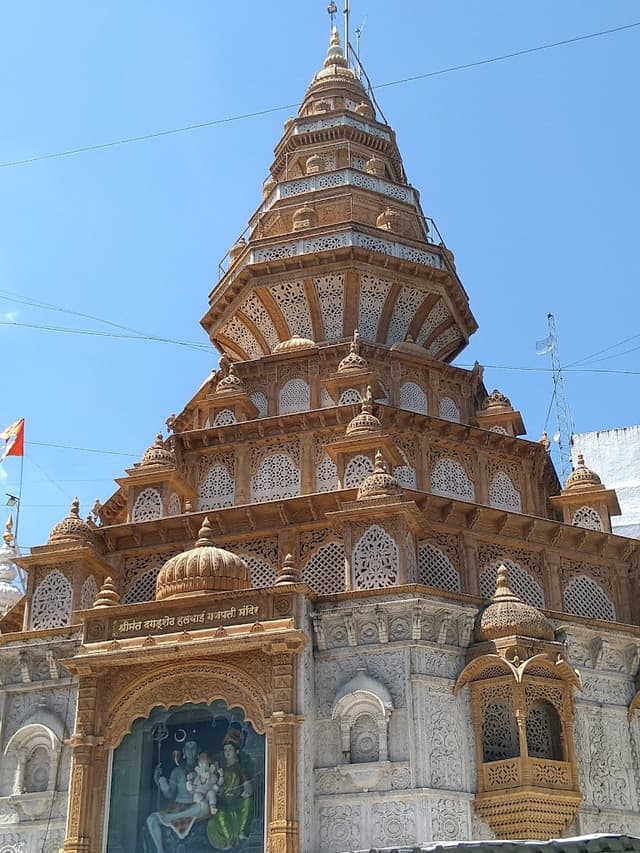
The old city of Pune is divided into "peths", a form of district used in the local language of Marathi. The newer, expanded city has different names for the divisions, but peths are used in the old city. Budhwar Peth is the business district in the old city, as well as three of five major temples dedicated to the Hindu god Ganesha/Ganpati.
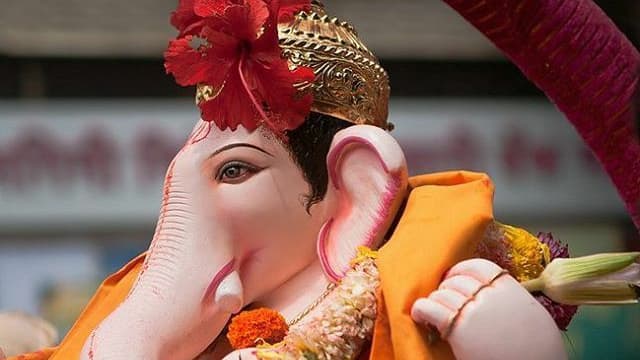
One of those temples is this one, which, as the name suggests ("Ganapati" is an alternative name for the "elephant" god Ganesha), is dedicated to the Hindu god Ganesh, the remover of obstacles and is one of the primary gods of the city of Pune. This temple in particular has historic importance in the city as it was the host for the public festival dedicated to Ganapati for centuries. When I was there in early August the city was preparing for the Ganapati festival!
Photos are not allowed to be taken in any temple out of respect.

The site of one of the primary markets, especially for women, The temple dates back to the 17th century.
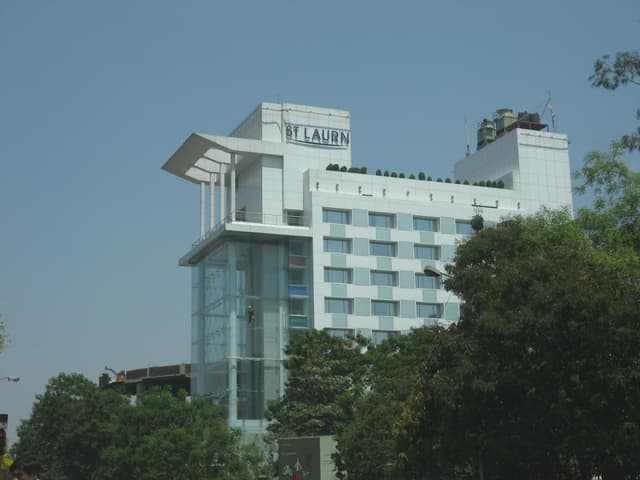
This hotel is where my friend hosted the rehearsal dinner the night before wedding and is located in the upscale neighborhood of Koregaon Park.

The wedding and reception were held in this luxury hotel, also in the upscale neighborhood of Koregaon Park. It's located right across the street from the Osho Resort (Osho, aka, the Bhagwan Rajneesh who despite having passed a while ago still maintains a devoted following). But even if you're not into Eastern cults, it's a beautiful, luxe hotel with stunning rooms and amenities. We only used rooms for wedding prep, but the event spaces are beautiful as well!

New Delhi
New Delhi (not to be confused with Delhi, the old city and state) is the capital of India and the second-largest city in the country. It's located a few hundred kilometers from the Himalayas and is notorious for having some of the worst air quality in the world, especially in the summer months. However, given its importance both historically and culturally, it's included in many lists of must-see cities in the country.

The day after the wedding we began a 10-day trip across Northern India, through the region known as the Golden Triangle. We flew from Pune to New Delhi, where we rented a bus that we used to travel through the north and checked into the hotel. The location and hotel aren't terribly impressive, but the price point is great and the area is relatively safe and not too far from where you need to be in New Delhi. Plus, the terrace has some cool views with the occasional visitor: we were graced with the presence of a few falcons! Breakfast and dinner were included in our reservation.
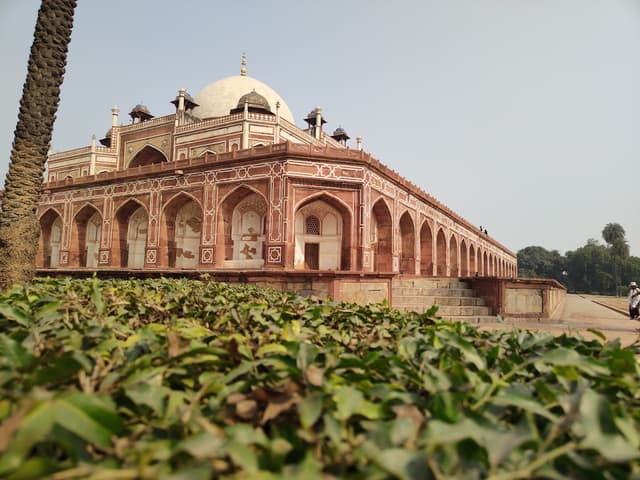
This complex in New Delhi is dedicated to one of the first Mughal rulers of the Subcontinent. It's notably the inspiration for the Taj Mahal in Agra, built a little over a hundred years later.
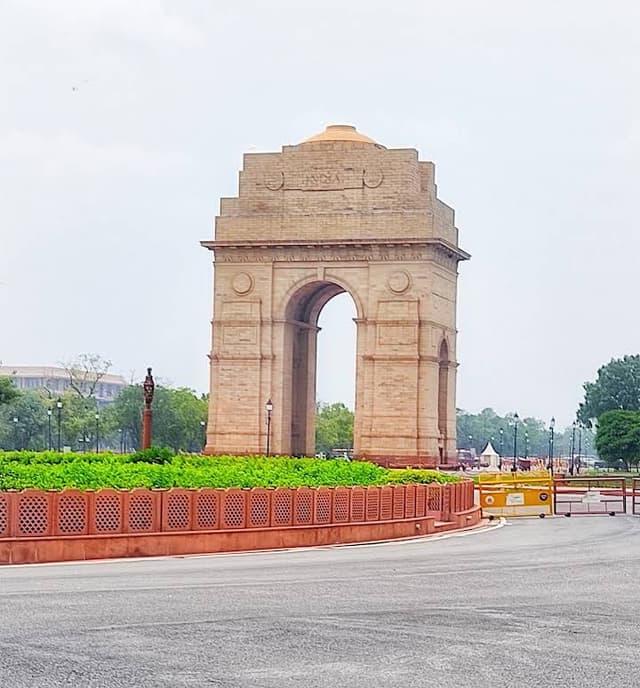
A memorial dedicated to the Indians who fought and died in the major world wars as part of the British Empire, it's located on a massive esplanade in front of the Presidential Palace. We were there for the sunset and as it was a holiday, throngs of people (but of course India is the most populated country on Earth right now, so what else can be expected?).
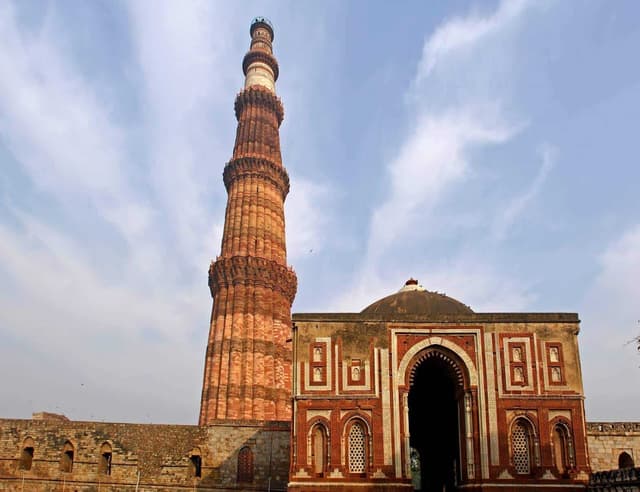
This iconic site with the tallest minar in India is where the Mughal leaders began their reign in the 12th century CE. The mosque itself is mostly lying in ruins next to the Hindu temple in the same place that had been torn down when the mosque was built, but is still the most visited landmark in the city as well as a UNESCO World Heritage site.
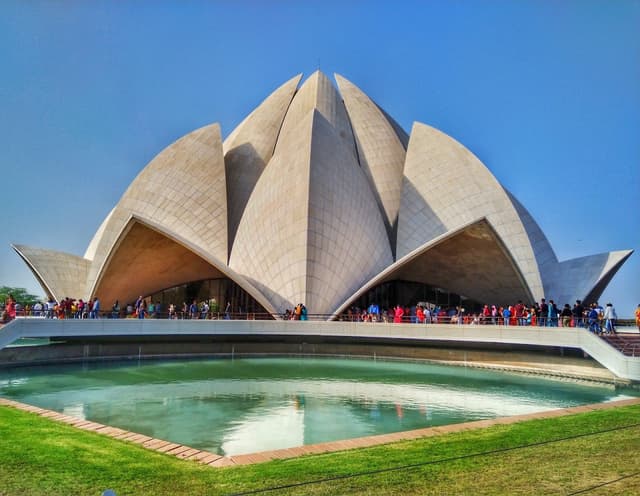
This gorgeous temple built for the Baha'i faith in 1986 is designed to provide an inclusive place for all religions to be able to have a place to find peace and worship. Even if you're an atheist and have zero interest in religion, it's still a very beautiful and peaceful place to spend some time in one of the most congested cities on the planet.

This temple complex is relatively new as it was inaugurated in 2005, but is stunning and majestic as it was built entirely using traditional methods as is typical for Hindu temples. Photography is not allowed in the complex as are bags (and all leather items are banned from Hindu temples as a whole).
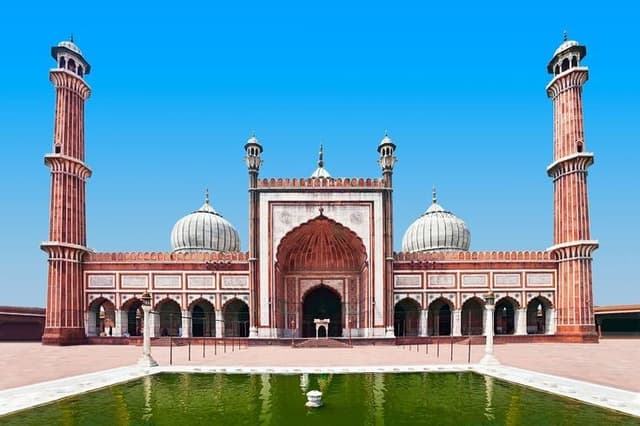
On our last full day in Delhi, we were supposed to visit the Red Fort, however, what we didn't realize when the itinerary was planned for us was that because we were less than a week out from the 75th anniversary of Indian Independence Day, the entire complex was closed for security purposes as they were beefing up security to ensure everyone's safety. So we decided to visit the Jama Masjid, or Friday Mosque, in Old Delhi, the largest mosque in India and one of the largest in the world. We split up into groups due to certain restrictions such as only one camera per group, and experienced a torrential downpour typical of monsoon season. Walk up the steps in the minarets and experience privileged views of Old Delhi in all of its (extremely congested and smoggy) glory.
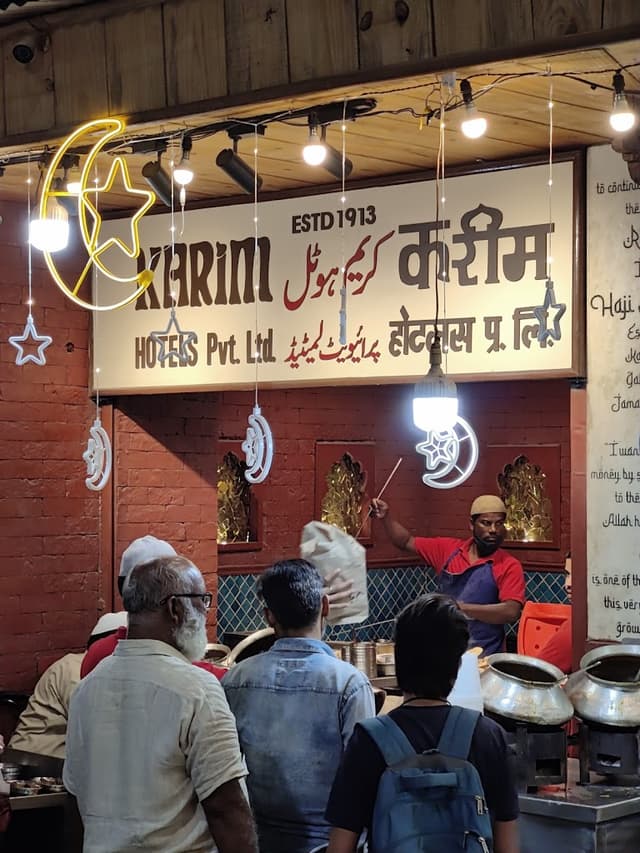
One of the most iconic Mughal/Mughlai restaurants in all of Delhi, this restaurant serves traditional Indo-Muslim (Mughal) cuisine just a few blocks from the Jama Masjid.
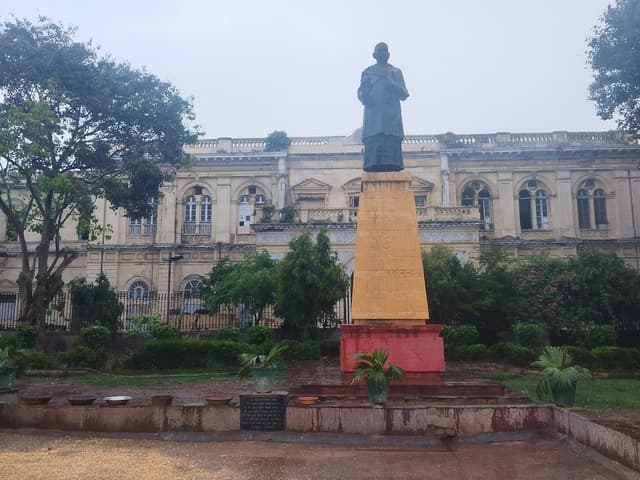
Full disclosure: I have pretty bad anxiety, especially in very crowded places. Chandni Chowk, or "Market of the Moon", is the market district and not at all for the faint of heart if you have even mild agoraphobia. I, thankfully, was with very close friends who noticed my distress and walked with me so I was actually able to take in all the sights, smells, and sounds of the market. Narrow streets and throngs of people are par for the course, but if you're in the right company or don't have the anxiety I do, you'll love it here!
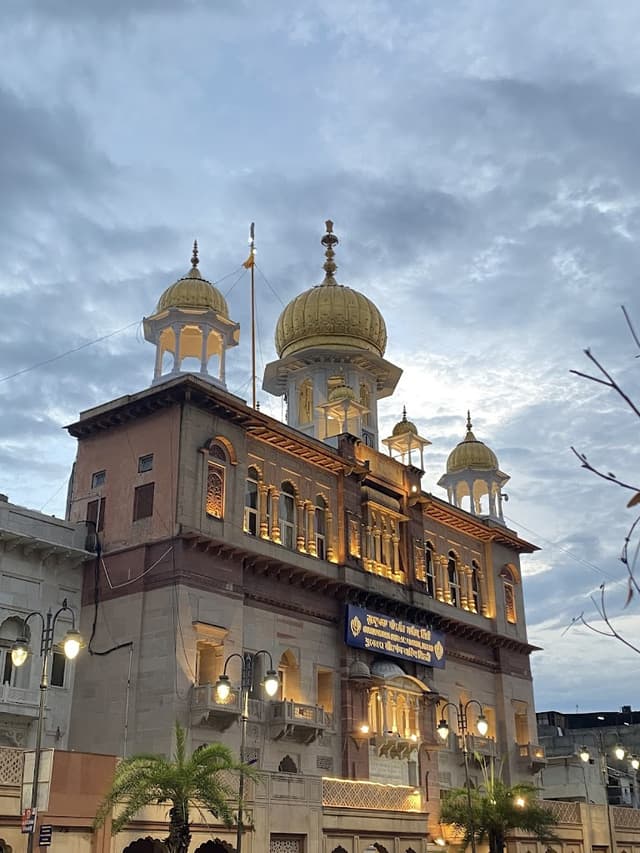
This gorgeous gurudwara (Sikh temple) right on the main strip leading to the Red Fort was the perfect place to relax and be at peace after the craziness of the Chandni Chowk. We were greeted to a free meal, which all gurudwaras all over the world provide to everyone, assisted in making roti in the kitchen, and a tour of the grounds and facilities by a very hospitable congregant.
Agra

Agra is a relatively small city by Indian standards located a few hundred kilometers from New Delhi, and due to its popularity thanks to being the site of the Taj Mahal, there's a modern highway running from Delhi along with train routes. It's a culturally important city even aside from the Taj Mahal, and one of the most important tourist sites in the world.

A modern, convenient rest stop on the road to Agra where you can grab food and coffee before continuing your journey across the fields of Uttar Pradesh.
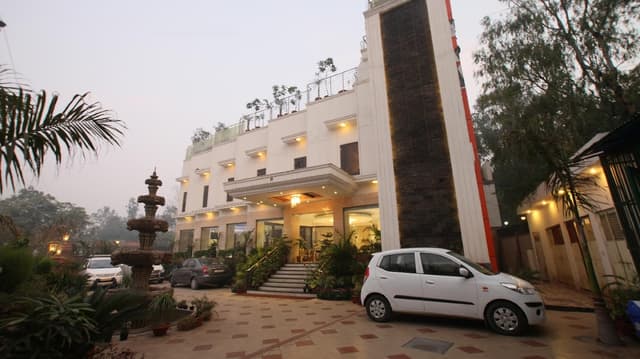
By far our favorite hotel in our entire stay, the terrace hosts some of the most incredible views of the Jewel herself, as well as a pool and and an amazing buffet service with sitar performances. It's within a 30-minute walk to the entrance gates of the Taj and a few blocks from cheaper backpacker hostels and more luxury hotels.
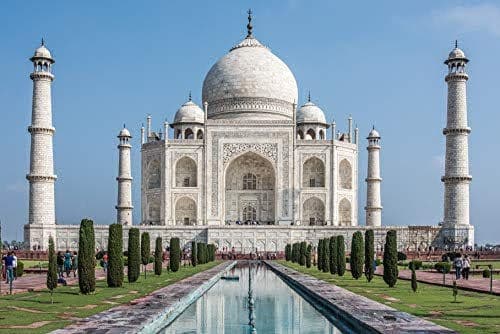
No trip to Agra, or India at that, is complete without a visit to probably the most famous Muslim monument in the world: the Taj Mahal. Built by Shah Jahan in the 16th century to commemorate his favorite wife, Mumtaz Mahal, who died in childbirth, it's a massive mausoleum where Shah Jahan himself was entombed built of glorious, glistening white marble.
We were almost unable to visit at all as we arrived late on Thursday (our van broke down in New Delhi and we were delayed by 6 hours trying to get it fixed) and our schedule that had been planned out for us had us visiting the monument on a Friday. Joke was on us, it's closed on Fridays as that day is the holy day in Islam, so we wouldn't have been able to visit at all. We had to change our schedule around to accommodate the visit, but it was well worth it.
As an extra bonus, it had just undergone a massive cleaning for the first time in what was likely centuries, and scaffolding had just been removed about a month prior. So despite the gloomy weather and clouds, we were still treated to a glistening monument fit for a Queen.
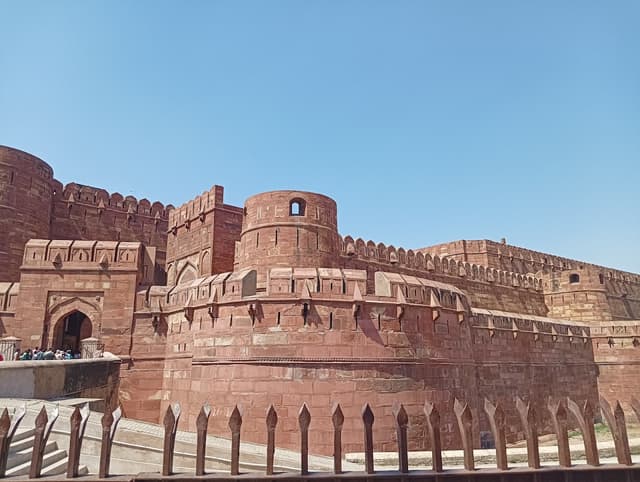
While only 20% of this fortress is open to the public (the rest of it is used as barracks for the Indian military), it's well worth a visit due to its historical significance as being the actual residence of Shah Jahan and his many wives and sons, one of whom imprisoned him in this very fortress.
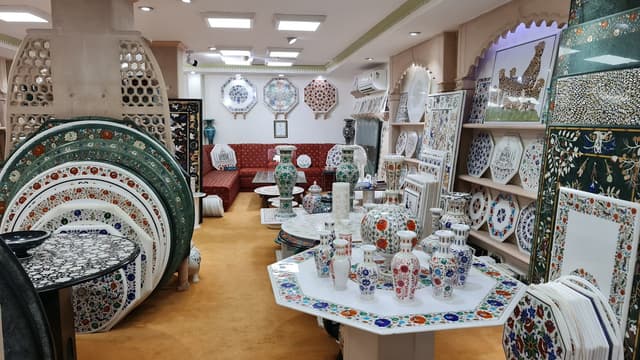
This tiny workshop has been active for centuries and it's where the glass and stone pieces adorning the Taj Mahal were produced. In the gift shop, you can pick up marble and stone works produced by the same artisans to bring home with you. My budget only allowed me to pick up a small elephant figurine with stone inlays, but the selection is divine even if your budget is tight as well!
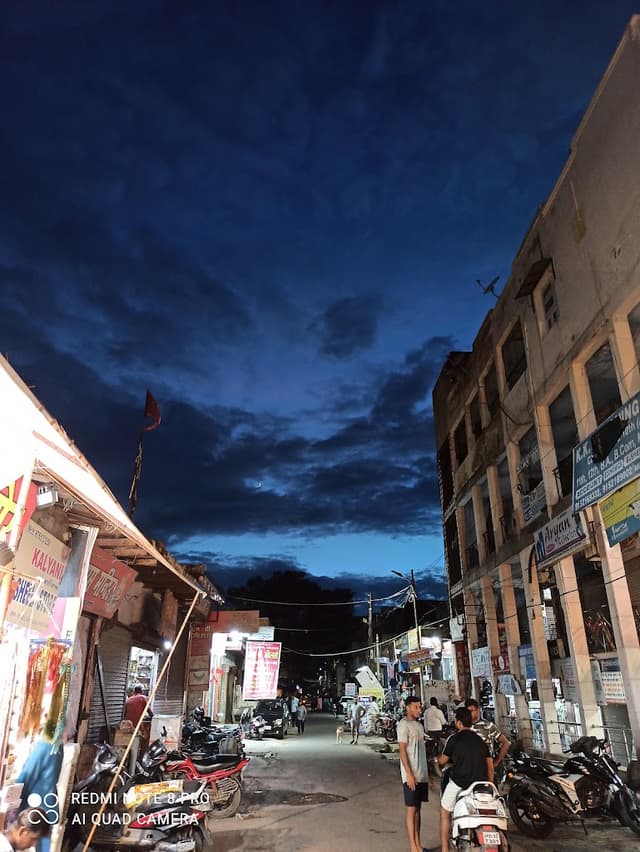
Sadar Bazar is the market district in Agra. We took a trip out here in the evening to pick up a few things, nothing in particular, but I ended up with a few clothing items and some jewelry.
Jaipur
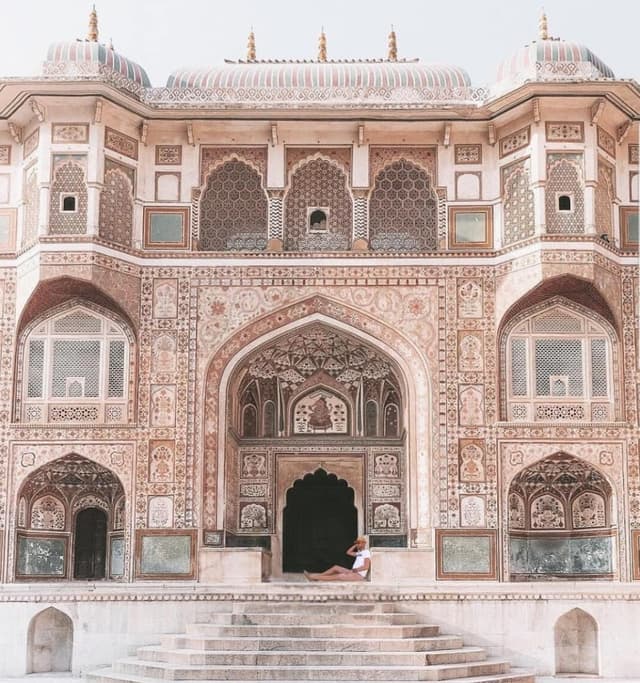
Jaipur is known as the "Pink City" due to the buildings in the center of the city being built with pink sandstone and is also the capital of the state of Rajasthan. It's also the seat of the Maharajahs, which continues to this day despite being solely a ceremonial position.
The road from Agra to Jaipur is far less smooth and modern as the one from New Delhi to Agra since most of the travel to Jaipur is from New Delhi. We saw the "real" India here, in all its poverty. If you didn't notice it before in New Delhi for some reason, you'll absolutely see it here.
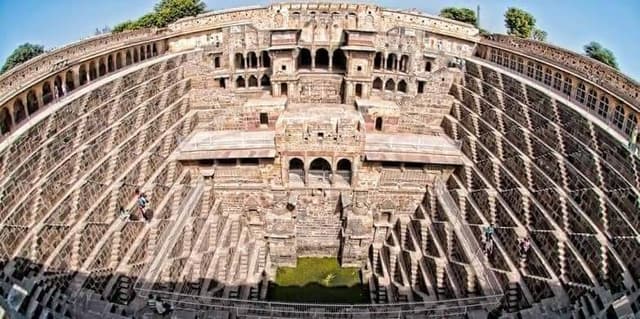
This iconic and historic stepwell, where water was kept in a reservoir for use throughout the year as Rajasthan is a mostly desert state. It's no longer in use for this purpose, but it's a historical landmark and one of the most famous stepwells of its kind. It's also been feautred in many feature films such as "The Dark Knight Returns".
Definitely check out the Hindu temple of Harshad Mata next to it. Now in ruins, but still beautiful!
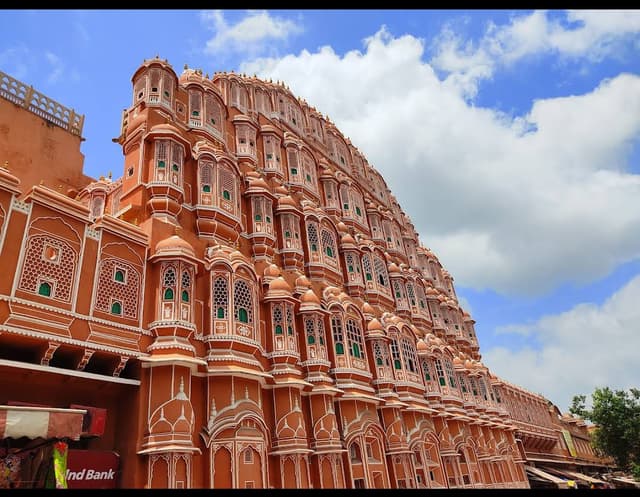
The Palace of Winds, this emblematic building in the city center of Jaipur is one of the reasons why the city is called "the pink city". It was built to house the many wives and women living in the palace from the people on the street but still giving them opportunities to watch the outside world.

This courtyard hotel is located outside the city center but within a 20-minute drive, and is in a beautiful older building. It's not particularly modern, but has full bathrooms and gorgeous courtyards with plumeria/frangipani trees on the premises and a quiet respite from the busy city.

This gorgeous and iconic palace is situated right on the outskirts of town on top of a hill and features elephant rides up said hill for two hours in the morning. The entire complex is stunning and vast and emblematic of the history of Northern India and the state of Rajasthan.
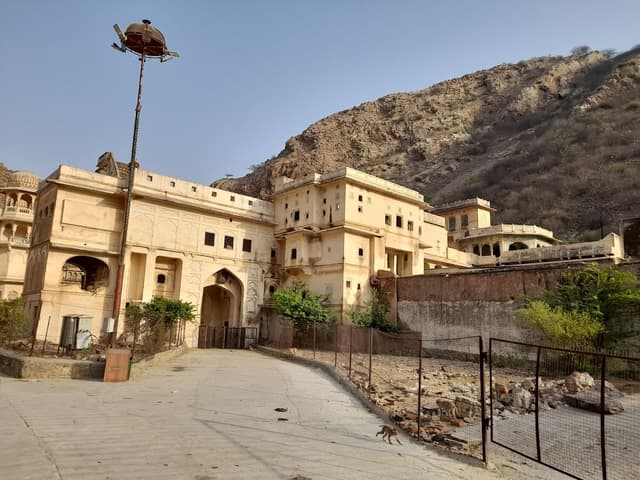
This temple complex dedicate to the monkey god Hanuman is located right outside the city and is also known as "the monkey temple" due to the rhesus macacque monkeys to populate the temple and are cared for by devotees.
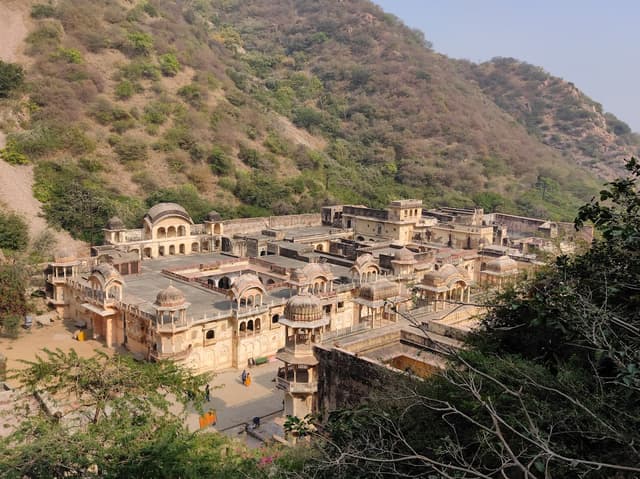
Further into the temple complex is a trail that goes up to another temple dedicated to the sun god Surya that overlooks the city of Jaipur. It's a bit of a hike (about a kilometer), but the views from the top are absolutely spectacular!
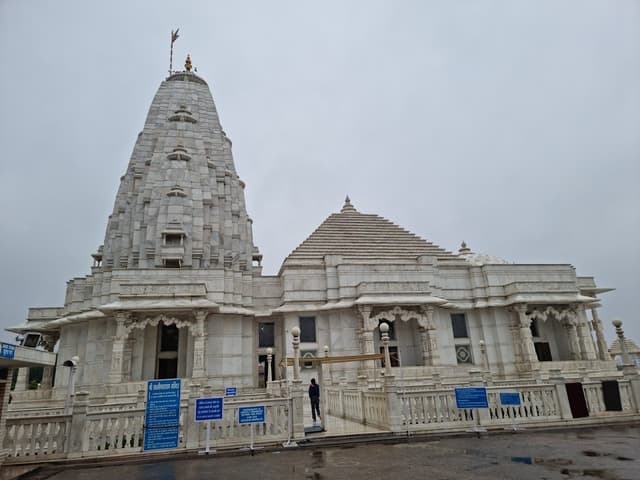
India is full of temples that have corporate sponsors who fund the construction and maintenance of the temples. They're still built in adherence to tradition and customs, just with corporations footing the bill. This is one of those temples.
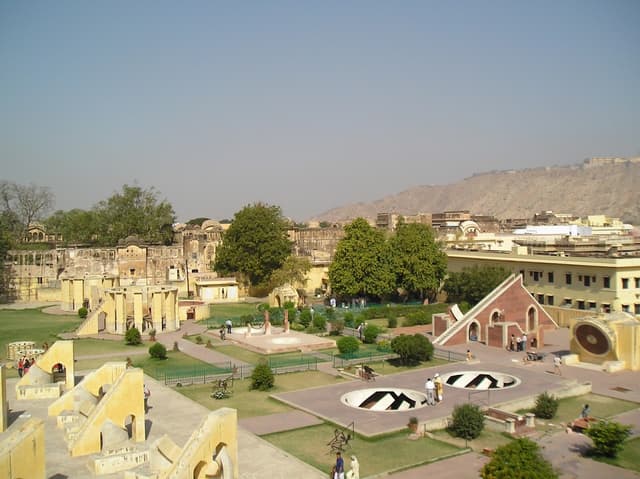
This massive outdoor observatory complex was used to study astronomy before telescopes were put to widespread use. If the sun's out you can figure out astronomical time, and there are calculation tables with India Standard Time so you can figure out the details for yourself.
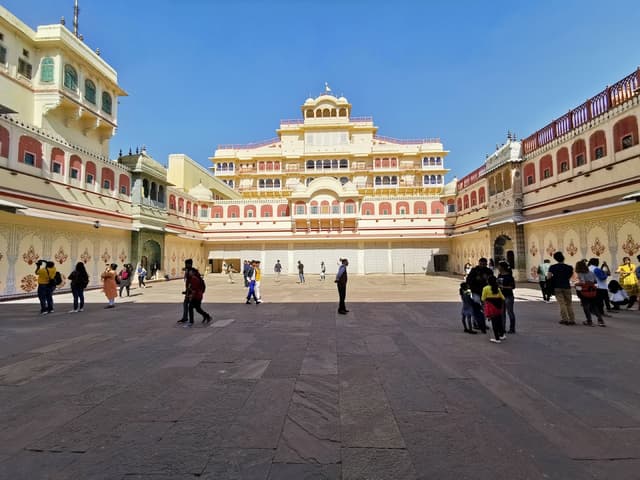
This residential and historical complex is the primary residence of the Maharajahs build in the 18th century. It's a museum complex where you can also do some shopping and exploring. Check out the artist markets where you can watch artisans make jewelry and painting in traditional styles!
Mumbai
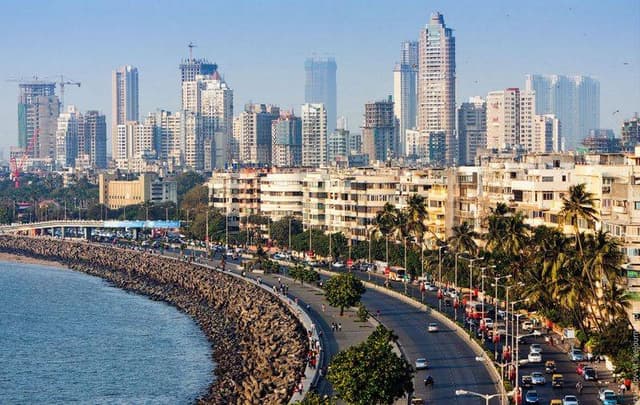
Mumbai is the largest city in India and the capital of the state of Maharashtra. It's the media hub of the country giving the name to the worldwide Bollywood phenomenon.
I only spent a few hours here as my flight back to the States via Doha left early in the next morning, but I was able to do some last-minute shopping and experience both Indian Independence Day and a religious festival dedicated to Krishna!
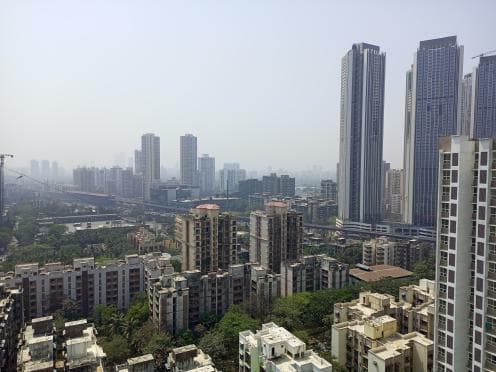
This residential neighborhood is full of markets and shops for picking up last-minute goods before heading back home. I picked up clothes at some of the chain stores and food and spices at some of the dry-goods stores.
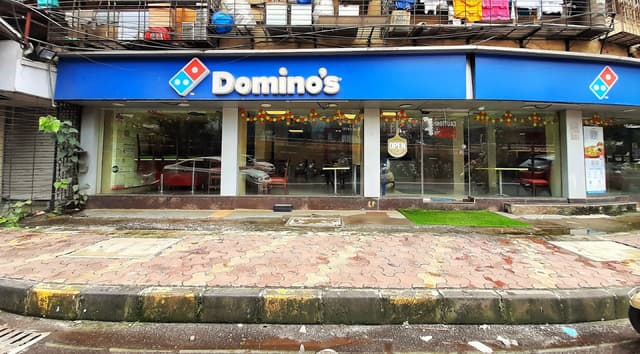
If, by the end of your stay in India your body decides it's done with Indian food, this is always an option. The entire group of Spaniards and I made this one of our final stops of the trip and I was one of the only ones who made the smart decision to order a plain cheese pizza (even the chicken pizza was spicy...). I have a pretty solid stomach and can eat just about anything, and I absolutely loved the local food we ate the entire trip. But sometimes eating a cheese pizza feels so good. Sorry not sorry.
Israel
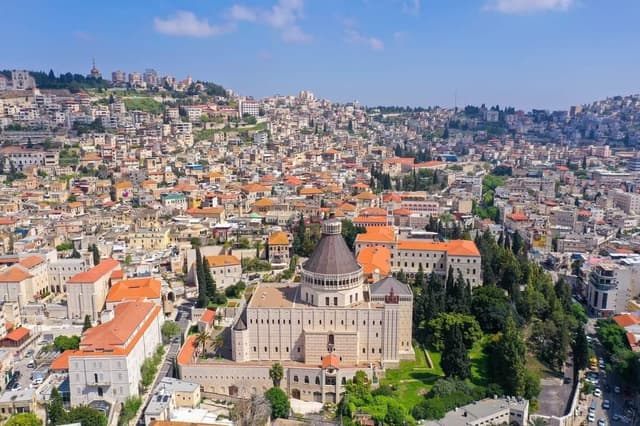
Israel is a major hub and a holy place for three of the world's major religions: Judaism, Christianity, and Islam. It's a cornerstone of both world and human history, having been populated for millennia. Current conflicts aside, it's a beautiful and fascinating country and I have the utmost love and respect for it.
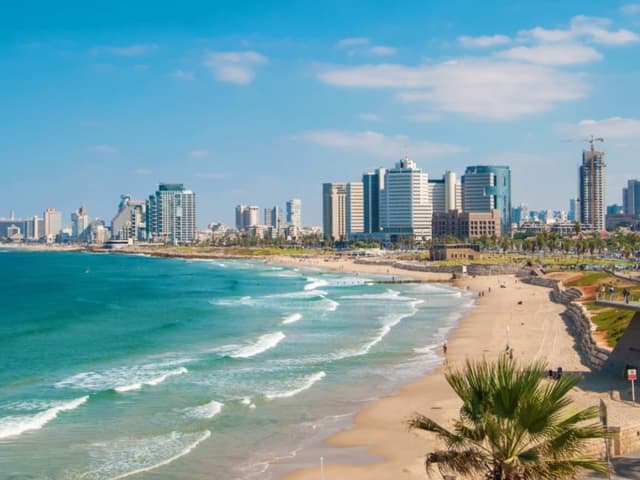
First stop: Tel Aviv. The administrative "capital" and largest city, it hugs the Mediterraean coastline and features some beautiful beaches that are lively and thriving. Tel Aviv is a progressive city with growing suburbs, and is where most of the country's industry (and high rents) are based.
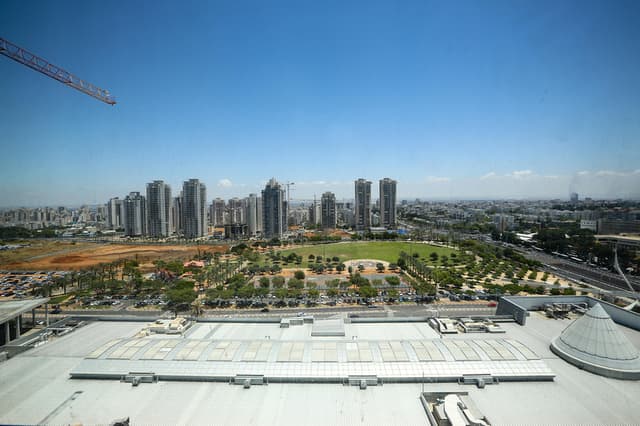
We spent the night at this hotel in the suburb of Petach Tikvah, just outside Tel Aviv. It's a modern business hotel located right next to a major shopping center. During weekdays there are buses going to and from Tel Aviv and other suburbs, and if you're lucky enough to get a room with city views, you can almost see the Mediterranean beyond the skyscrapers!

Located in the old city of Yafo (the full name of Tel Aviv is Tel Aviv-Yafo) is a predominantly Arab neighborhood and this restaurant is right on the port. It's a predominantly seafood and fish restaurant and you can order a full table of mezze with all kinds of hummus and other dips for your pita, with a second course of various types of fresh fish grilled to perfection. It's a local favorite and afterwards, you can burn off all that food while wandering through the ancient streets of Yafo and its fortress.
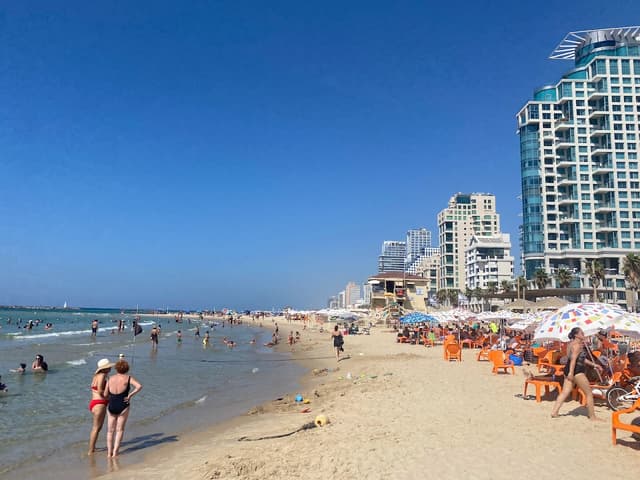
This beach club along the waterfront is the perfect place to relax, have a few drinks, listen to the waves, and watch planes coming in for a landing at the airport!
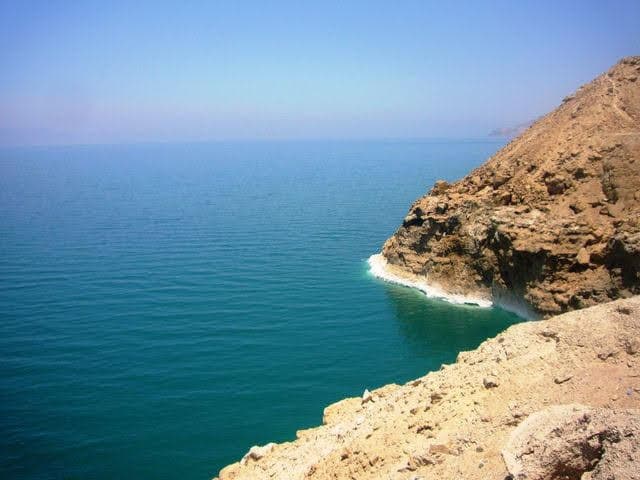
Most of this trip was spent on a Dead Sea vacation, which is the lowest point on Earth being a few hundred meters below sea level. The water is rapidly receding and many efforts are being made to protect water levels so they don't reach drastic lows, and the minerals are prized all over the world for their skin-treating properties due to the high salinity. Floating in the water is an incredible experience!
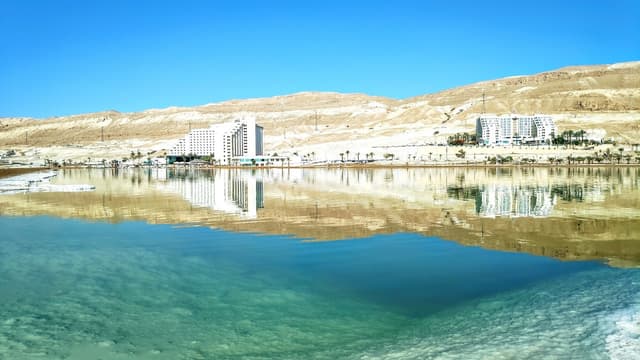
This small resort community is the primary location for most Dead Sea activities in Israel. There are multiple hotels in town that feature all kinds of activities for taking advantage of the Dead Sea minerals, including spas.

This resort hotel has multiple pools, both indoor and outdoor (both of which are accessible into October when we went as the weather is still quite warm) and spa services using local Dead Sea products at decent prices which are often discounted as part of the hotel package.
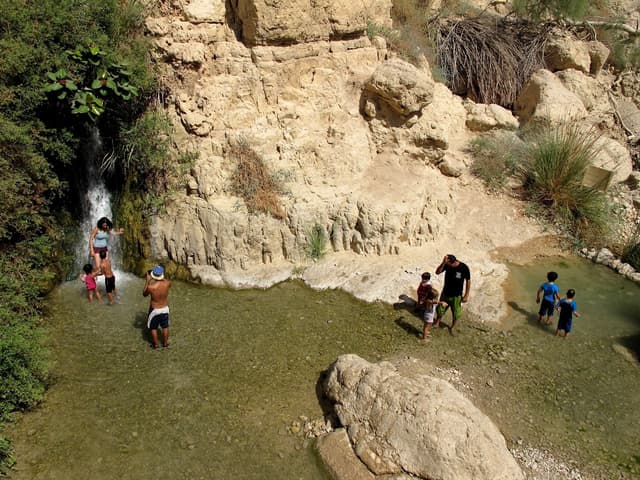
This region a few kilometers from the Dead Sea is in a desert area that was converted into a nightclub for the company. I tell ya, there is nothing like an Israeli party in the middle of a desert night. Truly unforgettable, even if you end up drinking too much...
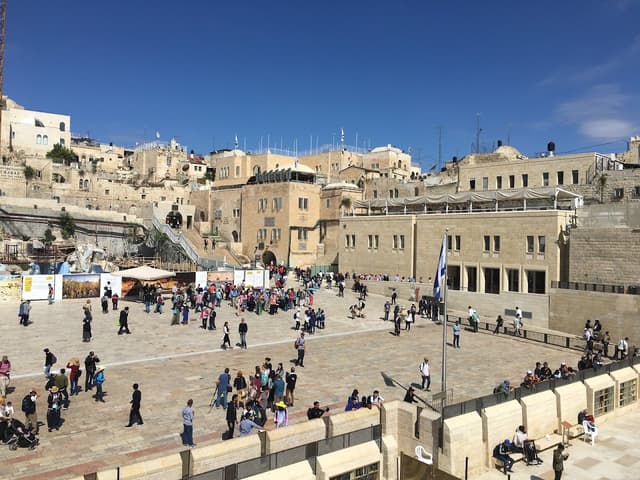
A city that's considered holy for three major world religions, it's a true microcosm of the Middle East. It may not always be the safest and it's good to check current events to see if it's safe during your travels. Thankfully when I went it was relatively safe, and given that I was with a Hebrew speaker who knows her way around the country we were able to avoid the more volatile areas. There are busses operating daily between the city of Eilat in the south to Jerusalem which pass through the Dead Sea, so we managed to grab one and "sneak out" as trips to Jerusalem were not planned through the company. After all, when you only have three days in Israel, why not spend some time in Jerusalem?

Visting the main shuk ("souk" in Arabic) is an absolute must. There are multiple food stalls and mini restaurants, one of which is a hummus place that features 100% organic and homemade hummus that is probably the best hummus you've ever had in your entire life and nothing else will ever compare. I've been ruined.
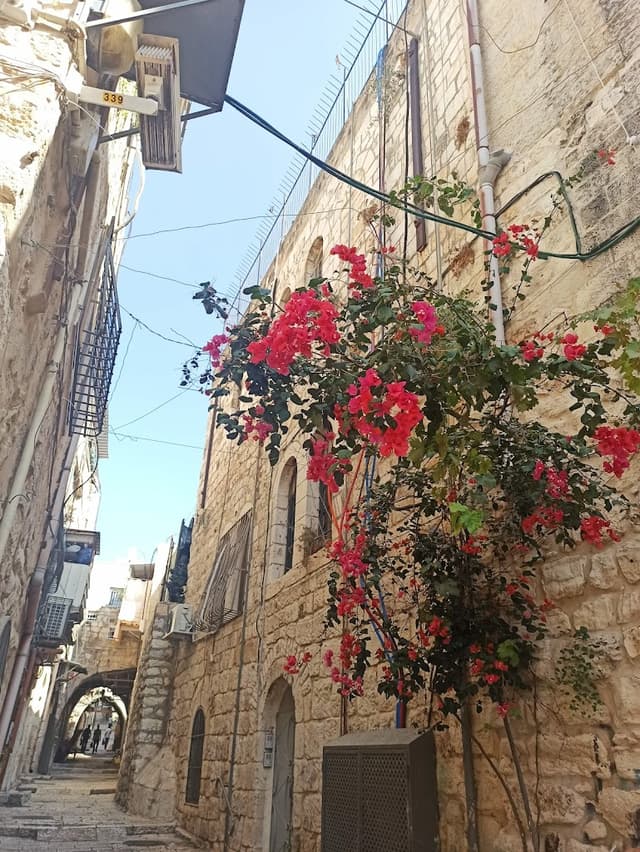
The Arab/Muslim Quarter is one of the best places to wander around and shop in; the shopkeepers are some of the friendliest people you will ever meet in your life. In talking with one of them, I was offered a small decorative plate for my mom with the Lord's Prayer written in Arabic calligraphy by one of them, which I brought home to my mom who collects them through her kids' travels. Bonus points if you know how to haggle as this is a great place to practice!
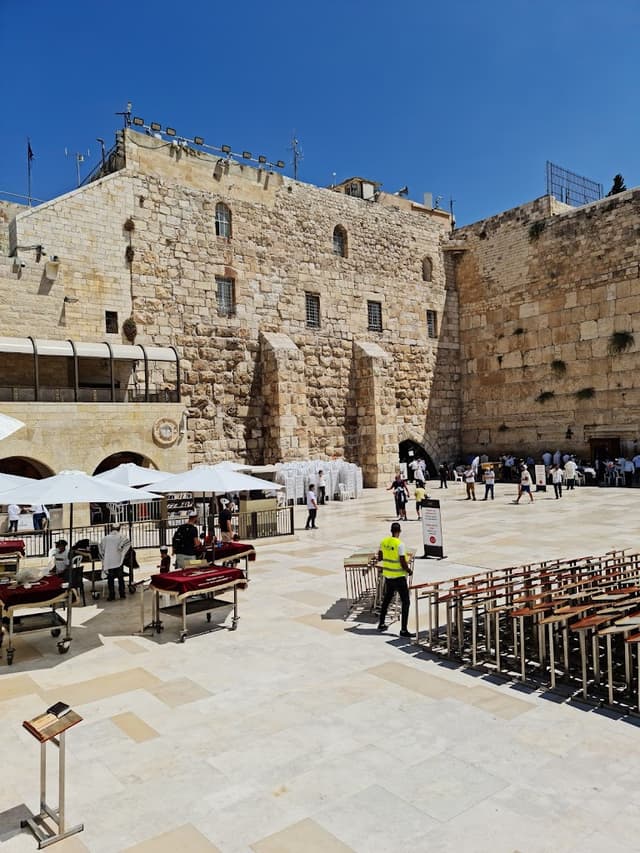
The holiest place in Judaism, people come from all over the world to tuck tiny slips of paper in the walls for prayer. People of all faiths (and even those with no faith at all) are welcome (for the most part) to participate in leaving prayers.
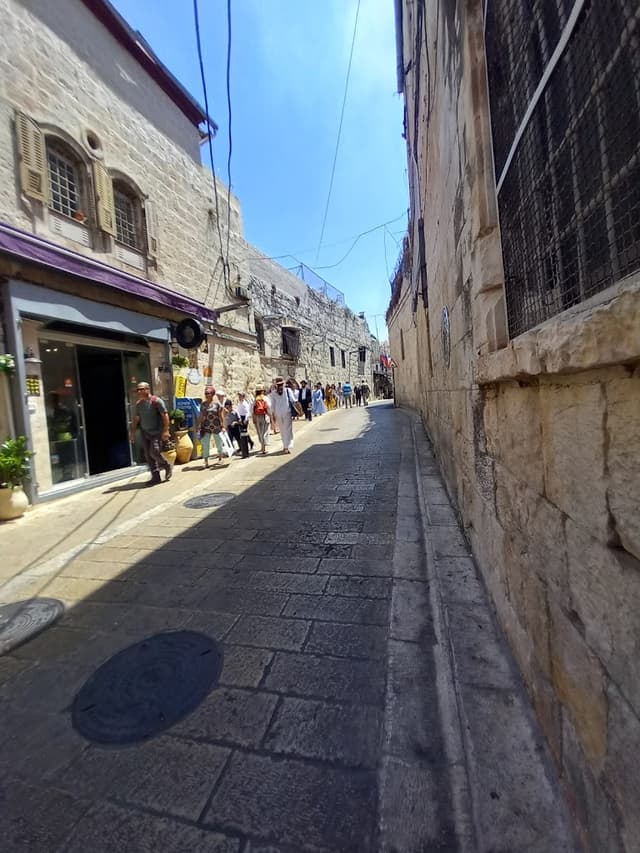
Wandering through the city and the Armenian Quarter you come across the Jaffa Gate on the edge of the old city which leads you out into the more modern developments.
Martinique
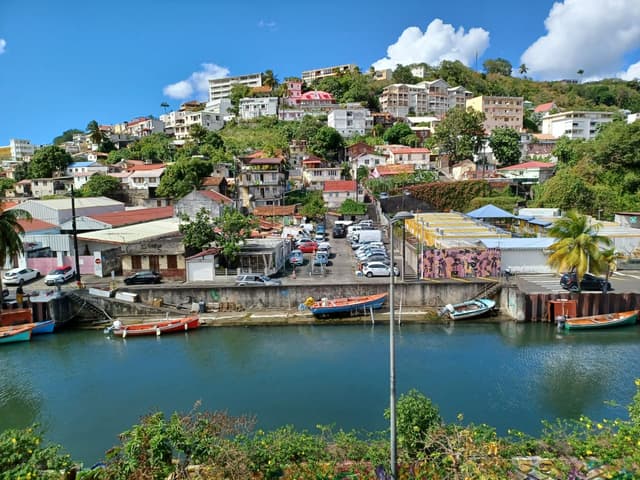
Martinique is part of France, one of the overseas départements and as such, is part of the European Union despite being located in the Caribbean. It holds a bit more autonomy but as it's still part of France, the currency is the euro and the majority language is French.
Norwegian Air also served it before they ceased operations outside the EU so we could find direct flights for less than $200 out of JFK in early December, and the flight itself was only about 3 hours long. It is, unfortunately, no longer as accessible from NYC (the only US city that has direct flights is Miami), but it's still well worth a visit if you can get there. The vast majority of tourists come from other parts of France so as an American it's truly a unique experience as it's way off the beaten path for most of us. It was also my first-ever visit to the Caribbean and first "solo" trip with my new friend, and it paved the way for us to be travel buddies. It's said that you truly get to know someone when you travel together, and despite a few hiccups, it worked out for us.
We rented a car at the airport as the vast majority of the island is not served by public transit, and since we only had two nights, we figured it'd be the best option for us. It truly is a great way to explore the island!
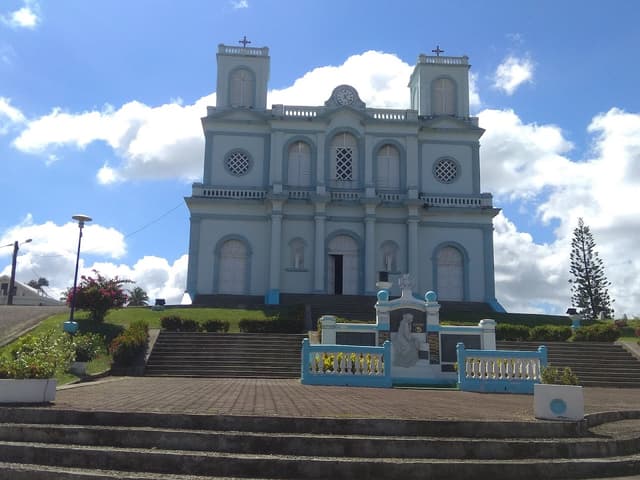
We stayed at an Airbnb just outside this small town overlooking the Caribbean. There's a small beach, and as this side of the island is much more rugged with extremely strong winds, it's not the best for beaches, but the scenery is just stunning.

In order to get to one of the best beaches on the island, you get to pass through this tiny town on the very south of the island. It's about a 2-hour drive through rainforests and hills, and while we didn't spend much time here, it's quite picturesque and quaint.
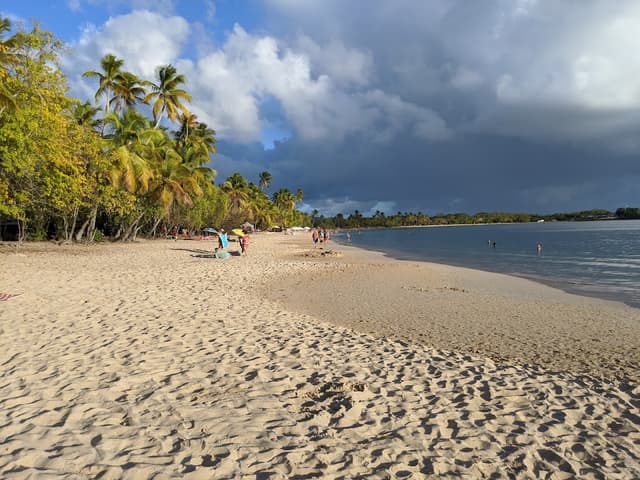
Keep driving and you'll end up at this gorgeous beach at the very southern tip. It's incredibly extensive and lined with beautifully kept coconut trees. When this is your first experience on a Caribbean beach, you're so grateful that you get to experience it. It may ruin you forever, but it's worth it.
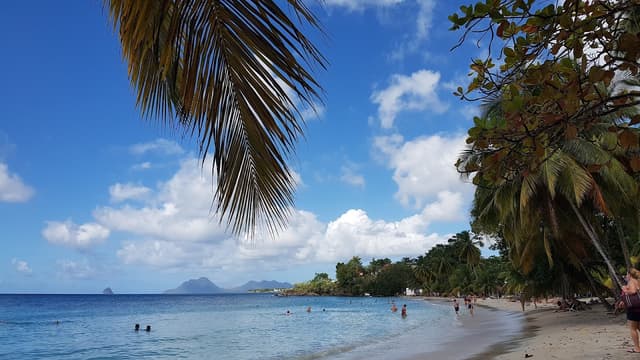
After leaving Paradise, we kept driving until we found another spot that beckoned for us to pull over and spend time at yet another beach. This one is much smaller but no less beautiful, and while we watched our co-workers and friends suffering through a snowstorm in NYC, we were a few thousand miles away enjoying palm trees and blue water.
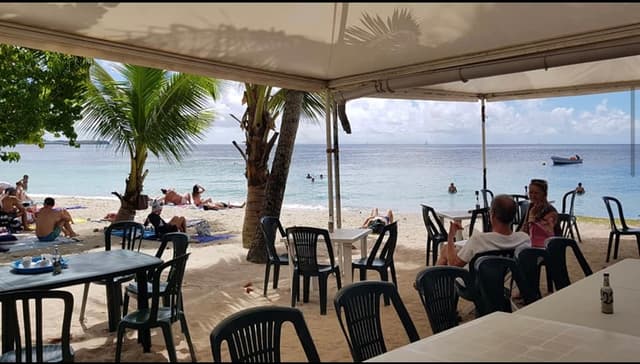
A girl's gotta eat, and thankfully, this beach has a restaurant right there. We ordered up some grilled fish, probably caught that day, with some piña coladas... Yeah.
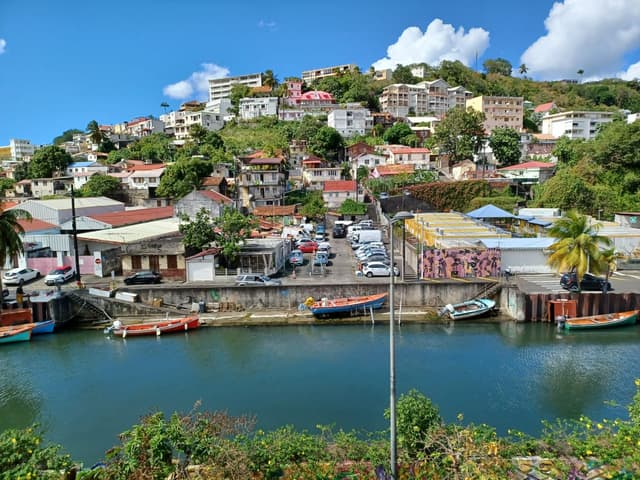
The capital of the territory and largest city is also where the airport is located. Most of the city was closed when we went due to French labor laws as we were there on a Saturday afternoon, but we still wandered around the port area and through the downtown. It's a typical example of French colonial design with very little Caribbean architecture or design so it's not the most exciting city, but if you have more time than we did and are there during the week or earlier on a Saturday morning, there are probably many more options!
If you're in the mood and the market for an off-the-beaten path destination in the Caribbean, definitely give Martinique a chance if it's feasible for you. We're so disappointed that it's not as accessible anymore, and hope flights from New York are reinstated at some point soon.
Thus ended 2017. With a trip to the Caribbean with a new best friend. My life would never be the same.
Ready for more?
Check out some of the guides I've created to help inspire you to check out some of these places!
The home for unique & authentic travel
